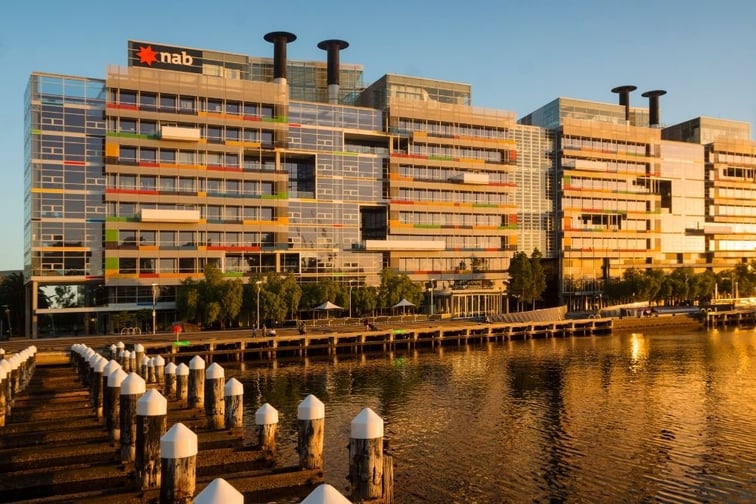

NAB has slashed 0.1% off its base variable rate, bringing the rate to 2.19% and heating up the competition in the variable home loan space – but only for new owner-occupiers.
RateCity.com.au compiled the lowest variable rates for the big four banks:
|
Bank |
Basic variable |
LVR variable |
|---|---|---|
|
2.29% |
80% |
|
|
Westpac |
2.19% |
70% |
|
NAB |
2.19% |
80% |
|
ANZ |
2.19% |
70% |
NAB also upped its fixed rates for owner-occupiers and investors by up to 0.5%. This was the sixth time the bank hiked fixed rates in six months, and the second time this year.
The change resulted in NAB having only one fixed rate under 3%, at 2.47% for one year.
RateCity.com.au showed the NAB home loan rate changes for owner-occupiers:
|
Rate type |
Old rate |
New rate |
change |
Repayment difference $500k |
|---|---|---|---|---|
|
Variable |
2.29% |
2.19% |
-0.1% |
-$15 |
|
one-year fixed |
2.64% |
2.74% |
+0.1% |
$26 |
|
two-year fixed |
2.89% |
3.09% |
+0.2% |
$54 |
|
three-year fixed |
3.34% |
3.59% |
+0.25% |
$70 |
|
four-year fixed |
3.54% |
3.99% |
+0.45% |
$128 |
|
five-year fixed |
3.69% |
4.19% |
+0.5% |
$144 |
“While fixed rates are rising rapidly, there is still plenty of competition in the variable home loan market,” said Sally Tindall, RateCity.com.au research director. “NAB has bowed to the pressure and cut its basic variable rate to match its big bank competitors Westpac and ANZ. Despite no change from the RBA, we’ve seen the average big four bank basic variable rate drop by 0.35% in the last year, but only for new customers. For anyone on a variable rate, now is the time to haggle with your lender before the predicted RBA rate hikes begin.”
According to the latest ABS data, new borrowers are shifting back to variable loans, with 66% of new loans settled in January on a variable rate.
“With the majority of fixed rates from the big four now starting with a ‘3’ or higher, it’s no surprise to see borrowers opt for lower variable rates,” Tindall said.
